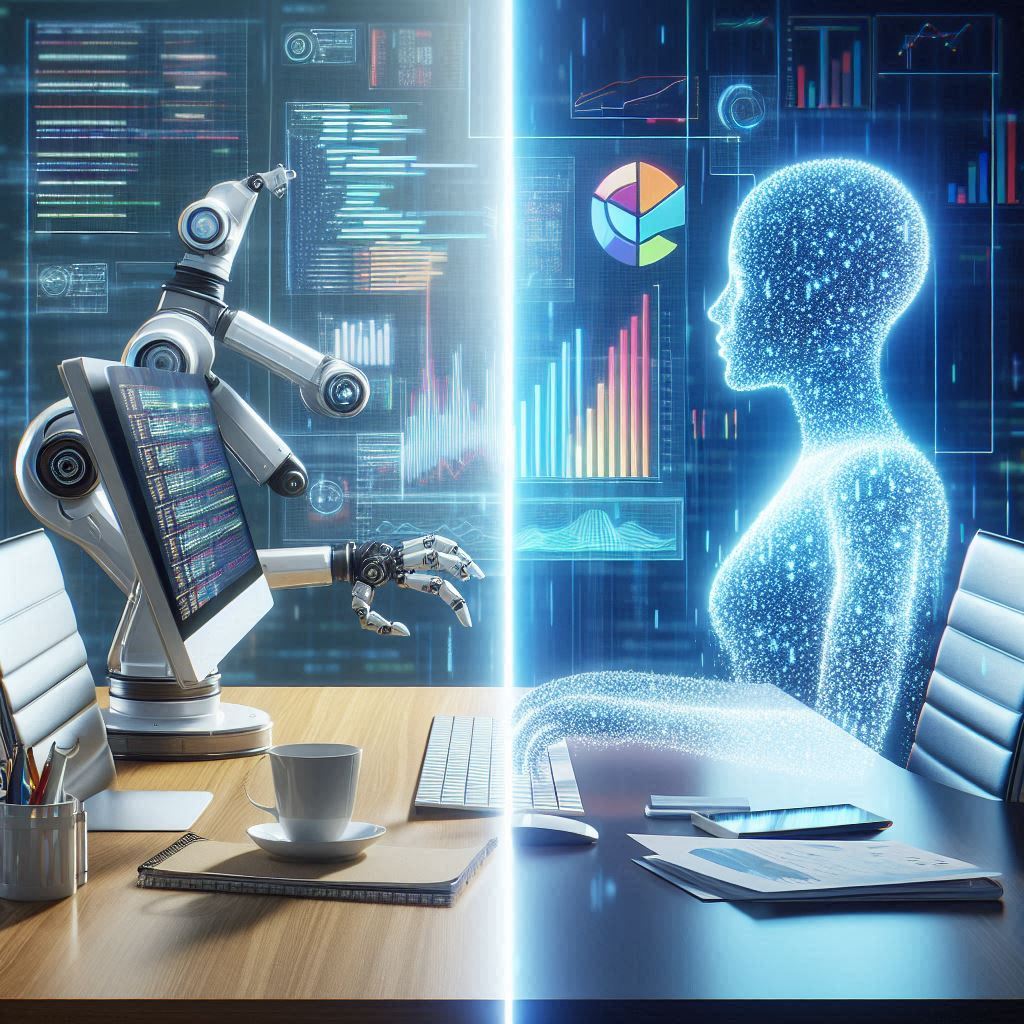Introduction
Are AI and automation the same thing? Many businesses think they are—but here’s a surprising fact: only 26% of companies using traditional automation have adopted AI-based solutions. That’s a big gap—and a big missed opportunity.
So, what makes AI different from traditional automation? And more importantly, how does it impact your business?
In this blog, we’ll break it down in simple terms. You’ll learn:
- The key difference between AI and automation (with real-world examples)
- Why it matters for your business growth
- How to get started with AI—even if you’re not a tech expert
Let’s clear the confusion and help you make smarter choices for the future.
What Is the Difference Between AI and Traditional Automation?

Traditional automation is like a robot following a strict script. It does exactly what you tell it—nothing more, nothing less.
Example: A chatbot that gives the same 5 responses when customers ask specific questions.
AI (Artificial Intelligence), on the other hand, is like a smart assistant. It learns over time, understands patterns, and makes decisions based on data.
Example: A chatbot that understands natural language, remembers past conversations, and adapts responses based on customer mood.
Key Differences:
- Flexibility: Automation is rigid; AI is adaptive.
- Learning: Automation repeats; AI improves.
- Intelligence: Automation follows rules; AI makes decisions.
Think of automation as a conveyor belt and AI as a smart worker on that belt who can identify issues, make choices, and optimize on the go.
Why It Matters for Businesses
Understanding this difference can save your business time, money, and headaches.
1. Efficiency and Speed
- Traditional automation handles repetitive tasks—great for cutting labor costs.
- AI can handle complex decision-making—great for streamlining workflows and scaling faster.
2. Personalization
- Automation sends the same email to everyone.
- AI tailors emails based on user behavior, preferences, and engagement.
3. Competitive Edge
Companies using AI for marketing, customer support, or data analysis are seeing up to 30% higher productivity compared to those using just automation.
In short: automation gets you started; AI helps you grow.
Real Examples or Stories
✨ Example 1: Customer Support at Scale
Traditional Automation: A bank sets up basic chatbots to answer FAQs.
AI: HDFC Bank uses AI-powered bots like “Eva” to answer over 5 million queries in a few seconds, analyze customer tone, and escalate when needed.
✨ Example 2: E-Commerce Recommendations
Traditional Automation: Sends the same “Thank You” email to all customers.
AI: Amazon’s AI recommends products based on your browsing history, purchases, and even what others like you bought—leading to 35% of total sales.
These aren’t just fancy tools—they’re real business boosters.
How to Get Started
You don’t need a huge budget or tech team to begin.
Step 1: Identify a repetitive task
Look for tasks in marketing, HR, or customer service that eat up time—like sorting emails or scheduling.
Step 2: Choose a simple AI tool
Here are a few to try:
- Zapier + OpenAI – Add intelligence to workflows
- Tidio or Drift – Smart AI-powered chatbots
- Copy.ai or Jasper – For AI-powered content writing
- Pictory or Lumen5 – Create videos from text in minutes
Step 3: Test and Learn
Start small. Monitor results. Improve over time.
What to Watch Out For
While AI is powerful, it’s not magic. Here are a few challenges:
❌ Overdependence
Don’t rely entirely on AI—use human judgment for sensitive decisions.
⚠️ Poor Data Quality
AI is only as smart as the data it gets. Clean, updated data is essential.
🤖 Miscommunication
Customers can get frustrated if AI responses feel robotic. Make sure it’s trained well and includes human backup when needed.
💸 Hidden Costs
Free tools are great, but scaling AI might need investment. Plan ahead.
Conclusion
AI and traditional automation both play important roles—but they’re not the same. Automation follows orders. AI learns, adapts, and evolves with your business.
By understanding this difference, you can make smarter decisions, stay ahead of your competitors, and deliver more value to your customers.
Have you used AI or automation in your business yet?
Drop your experience in the comments